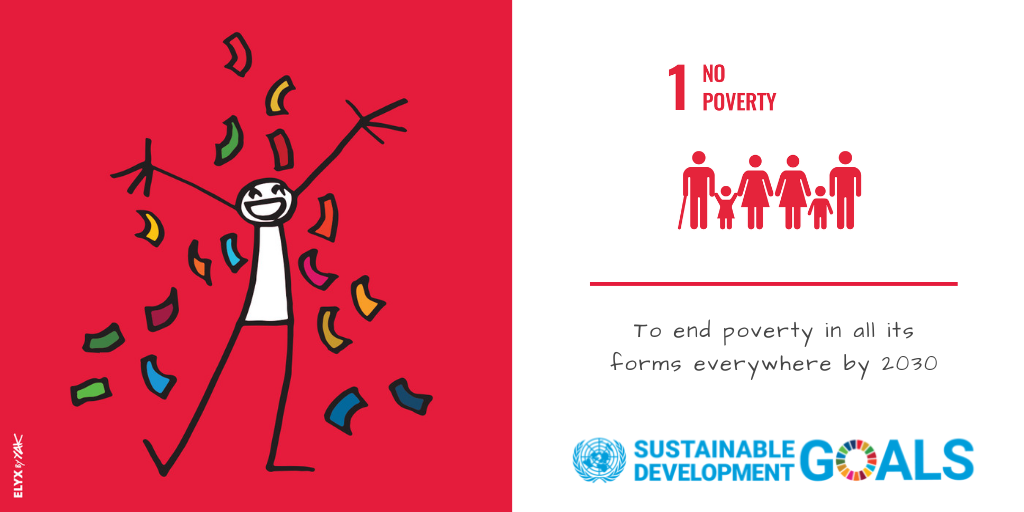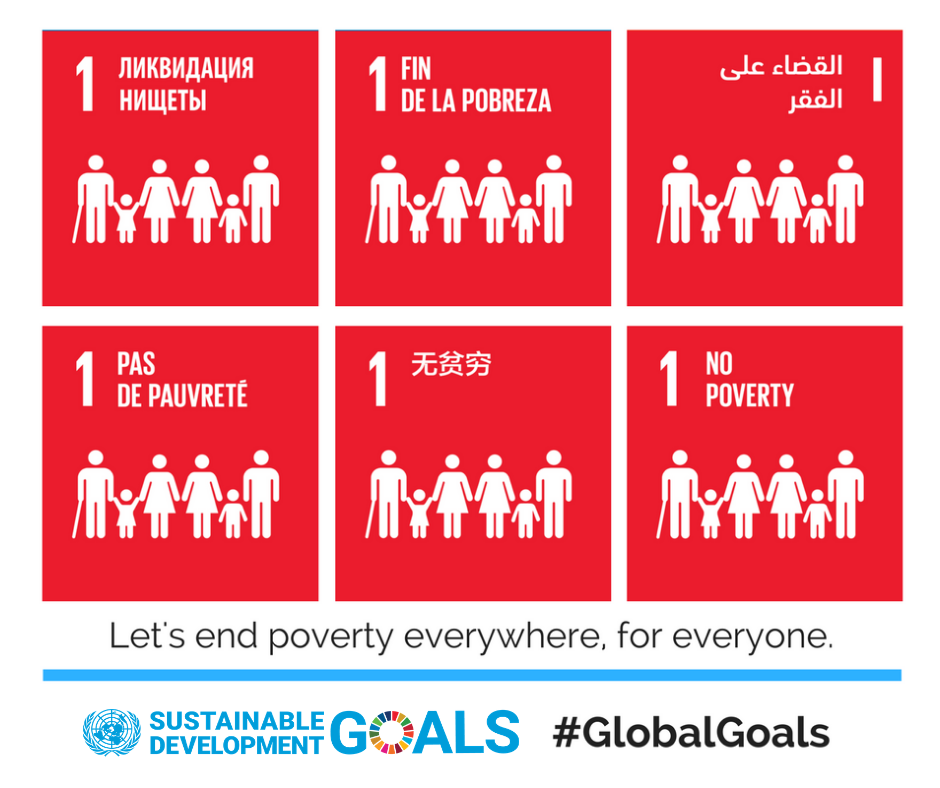The United Nations Sustainable Development Goal #1

The United Nations Sustainable Development Goal #1 (SDG1) is to end poverty in all forms everywhere. Whilst this seems like a grand commitment, the world was well on its way to achieving this. That was until the COVID-19 pandemic struck.
In 2000, at the beginning of a new millennium, 189 nations came together and adopted the Millennium Declaration and pledged to "spare no effort to free our fellow men, women and children from the abject and dehumanising conditions of extreme poverty”.
The commitment brought about a framework that included eight goals that become practical steps enabling people across the world to improve their lives and futures. These steps led to over one billion people being able to escape poverty, reduced global hunger and gave more young women the chance to go to school.
Even with these achievements, there is a long way to go. Inequalities are persistent and the progress made has been significantly uneven. Due to this, the United Nations have introduced the 2030 Agenda for Sustainable Development which includes a set of Sustainable Development Goals (SDG's). The purpose of this is to "build upon the achievements of the Millennium Development Goals and seek to address their unfinished business”.
Due to the COVID-19 pandemic, more than four years of progress against poverty have been erased. 2020 saw an unprecedented rise in extreme poverty across the globe with the highest rise since 1990. In 2022, between 657-676 million people live in extreme poverty compared to 581 million pre-pandemic. That is a rise of almost 100 million people.
In addition to this, working poverty also rose for the first time in 20 years from 6.7 in 2019 to 7.2 in 2020 which pushed over eight million workers into poverty.
According to the United Nations, poverty had continued to decline between 2015 and 2018 with the global poverty rate falling from 10.1% to 8.6%. Owing to the pandemic, the rate increased to 9.2% in 2020 which was the largest rise since the 1990’s. Across the world, poverty reduction has been set back around three years. The losses have also been significantly higher in developing and low-income countries where poverty reduction has reversed at least 8 years. Following this, the poverty rate has reduced but is still higher than it was pre-pandemic.
Throughout the beginning of the pandemic, workers from around the world were pushed into poverty. Families living below the international poverty line increased from 6.7% in 2019 to 7.2% in 2020. This meant that around 8 million workers fell into poverty and were unable to prevent it.
Aiming and creating initiatives to eliminate poverty will lead to a prosperous future and give people socio-economic empowerment. This is why many charitable organisations such as the Tej Kohli and Ruit Foundation are taking steps to assist in achieving the UN's SDG#1. Curing communities of needless blindness have a direct effect on alleviating poverty. With direct grassroots interventions, communities and entire nations are able to prosper and begin to remove themselves from the formally inescapable cycle of extreme poverty.

The targets included within the first Sustainable Development Goal are:
- "Eradicate all extreme poverty for all people everywhere" - Extreme poverty is currently measured as people who are living on less than $1.25 a day.
- "Reduce at least half the proportion of men, women and children of all ages living in poverty" - Includes all types of poverty that follow national definitions.
- "Implement nationally appropriate social protection systems and measures for all"
- "Ensure that all men and women, in particular the poor and the vulnerable, have equal rights to economic resources" - This includes access to basic services, ownership, control over land and property, new technology, financial services and natural resources.
- "Build the resilience of the poor and those in vulnerable situations and reduce their exposure to climate-related extreme events" - Extreme events include other econmic, social and environmental disasters.
A. "Ensure significant mobilisation of resources from a variety of sources, including through enhanced development cooperation" - This is provide sufficient and predictable resources for developing countries.
B. "Create sound policy frameworks at the national, regional and international levels, based on pro-poor and gender-sensitive development' - To support a more rapid investment into poverty eradication actions and steps.
For more information on Tej Kohli as a philanthropist visit tejkohliruit.com and to read more of his views go to his Medium.
To read about Tej Kohli as an investor visit Kohli Ventures.
Find out more about Tej Kohli: Tej Kohli the technologist investing in human triumph, Tej Kohli the philanthropist trying to cure the developing world of cataracts and Tej Kohli the London tycoon with a generous streak.
| Follow: Twitter | Instagram | LinkedIn | Facebook | YouTube |

Comments ()